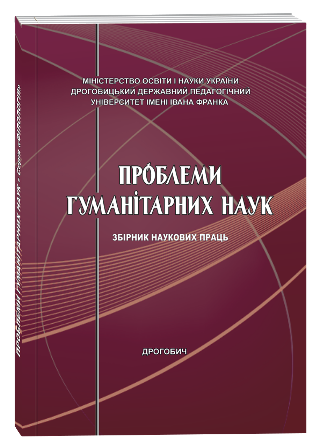THE DIACHRONIC CHARACTER OF REALIA AND HIGH-FREQUENCY USAGES AS FACTOR OF TRANSLATION (A CASE STUDY OF A SCANDAL IN BOHEMIA BY ARTHUR CONAN DOYLE)
DOI:
https://doi.org/10.24919/2522-4565.2023.57.4Keywords:
translation, high-frequency usage (usus), latent realia, Arthur Conan Doyle, ‘A Scandal in Bohemia’Abstract
The author argues that in the process of translating literary works, separated from
the modern reading public by a considerable time span, it is the diachronic aspect of both source
and target texts that becomes of great importance as minatory, among other things, of possible
misunderstandings, caused not only by the national-cultural, but also by chronological non-identity
of high-frequency usages (so-termed usūs). Developing his previously expressed thought as to the
risk of ‘usūs interference’, faced by each and every literary translator, the author also stresses the
possibility of a situation when wording in the original prompts to translators a vast variety of highfrequency
equivalents, acceptable in synchrony and from the viewpoint of a target language but not
in the least well-grounded philologically, apart from their purely superficial – rather than true-tothe-
original – ‘verbatim’ accuracy. Instead, the article highlights the importance of preparatory
work on the original, so that translational logic should parallel the mode of thinking of a careful
expounder, thereby allowing to locate such unclarities and, after tracing back the exact meaning
of corresponding lexical units, re-create them in translation as adequately as seems possible. The
posited thesis is illustrated by examples from the short-story ‘A Scandal in Bohemia’ by Arthur Conan
Doyle and three different translations of the text into Ukrainian (by V. Panchenko, Ye. Tarnavskyi,
and M. Dmytrenko) which testify in favour of deviating from the word-usage, observed in the original.
It is demonstrated that the alleged preferability of the suggested translational variants would, in
fact, only considerably undermine the imagery of the original, though the corresponding drawbacks
are not hard to remove by the ‘diachronic’ perusal of the source text in search for contextually
appropriate translational equivalents. Despite the ostensible negligibility of the differences in
meaning, observed in the episode under analysis, the author regards such instances as important in
view of their relevance to what he calls latent realia.
References
Академічний тлумачний словник української мови в 11 т. (СУМ-11). 1970–1980. URL : http://www.sum.in.ua.
Зарицький М. С. Переклад : Створення та редагування. Київ : Парламентське видавництво, 2004. 120 с.
Зорівчак Р. П. Реалія і переклад (на матеріалі англомовних перекладів української прози). Львів : Видавництво при Львівському державному університеті, 1989. 216 с.
Зорницький А. В. Особливості відтворення прикметника Bohemian при перекладі художнього тексту (на матеріалі оповідання А. Конан Дойла A Scandal in Bohemia). Вісник Житомирського державного університету імені Івана Франка. 2018. № 1(87). С. 80–84. DOI : https://doi.org/10.35433/philology.1(87).2018.80-84.
Карабан В. І., Карабан А. В. Узус і переклад : з чого та на що ми перекладаємо? Науковий вісник кафедри ЮНЕСКО КНЛУ. 2017. Вип. 34. С. 52–56.
Карабан В. І. Роль узусу в перекладі. Мовні і концептуальні картини світу. 2017. Вип. 59. С. 76–82.
Павленко О. Г. Авторське «Я» в перекладах Миколи Дмитренка. Вісник Маріупольського державного університету. Серія : Філологія. 2019. Вип. 21. С. 75–83. DOI : 10.34079/2226-3055-2019-12-21-75-83.
Петрушова Н. В., Кравченко В. Л., Петрович О. С. Особливості перекладу британських реалій оповідання А. К. Дойла «Скандал у Богемії» українською мовою. Вісник Харківського національного університету імені В. Н. Каразіна. 2021. Вип. 93. С. 43–54. DOI : 10.26565/2227-8877-2021-93-06.
Dalby J. T. Sherlock Holmes’s Cocaine Habit. Irish Journal of Psychological Medicine. 1991. No 8. P. 73–74.
Pearce D. H. Sherlock Holmes, Conan Doyle and Cocaine. Journal of the History of the Neurosciences : Basic and Clinical Perspectives. 1994. No. 4. P. 227–232.
Seleskovitch D., Lederer M. Interpréter pour traduire. Paris : Didier Érudition, 1997. 311 p.
Zornytskyi A., Mosiienko O., Vyskushenko S. How Do I Say Realia in English? On a Once ‘Cyrillic’ Translatological Problem. inTRAlinea. 2023. Vol. 25. URL : https://www.intralinea.org/current/article/how_do_i_say_realia_in_english.



